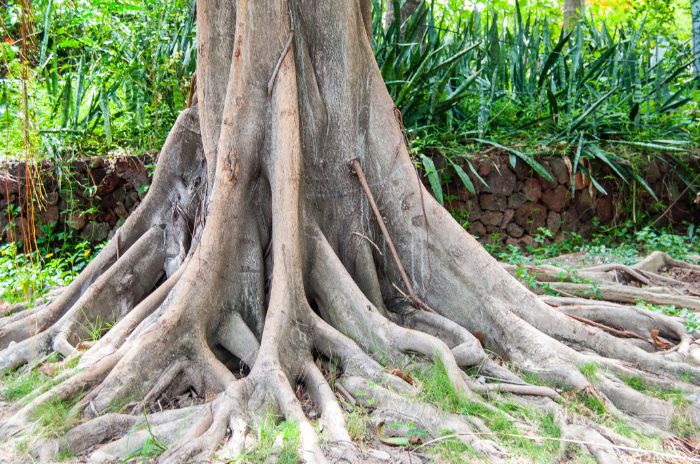Many homeowners are rightly concerned that when they add new trees to their landscape that these trees they plant may have invasive root structures. Trees with invasive root structures can cause big problems for sidewalks, patios, driveways and even foundations.
So, what is a homeowner supposed to do in this case? What trees have the least root structure? There are options out there in trees that are known to have root structures that do not spread all over the place or rise above the ground in many spots. Here are some trees to consider that are known to have less invasive root structure.

Here is a tree that grows very hardily in planting zones 8 – 10. This tree loves a full day of sun and grows some 30 feet tall and up to 20 feet wide. It can also be used as a dense shade tree and its branches are also resistant to wind damage. The only problem with this tree is the acorns that drop from it during the year. Some people like to collect them (as do animals) and others find them a nuisance.
The English Holly grows best in planting zones 7 through 9. It typically grows up to 40 feet tall and 25 feet wide. It provides dense shade and it craves full to partially sunny areas. It likes clay, loam or sandy soil that is moist and it’s OK if this soil is to the acidic side. It is susceptible to some plant diseases and scales.
Here is a tree that is also known by some as basswood. It can be planted in USDA agricultural zones 3 to 8. This tree reaches heights of 70 feet tall and up to 45 feet wide when it is mature. It can be planted in partial shade or sunny spots in a yard. In certain seasons it will produce very fragrant green or yellow flowers and its normally green leaves turn a golden color in the fall. The biggest drawback with this tree is they tend to be susceptible to many plant diseases.
All 60 varieties of Ash trees have been popular for years with their shallow root systems. They grow great in USDA planting zones 3 to 9. These trees’ leaves also turn a very nice purple, yellow or maroon color in the fall. They can be found growing in zones 4 to 9. The biggest drawback with them is they are susceptible to a fatal tree infestation known as emerald ash borer.
Although it is important to know what trees have the least root structure, keep in mind that root structure should not be the only factor considered when choosing a tree. You also must know you will most likely not find a tree that checks all the boxes in what you desire from one. That’s why it’s never a bad idea to consult with a tree professional before making any tree purchase. This way, you can also find out about the most durable trees in Florida and choose from them.
For help with your tree project, please give our team a call 24/7.








Aardvark Tree Service is top rated tree service company serving the communities of Volusia and Flagler County.
Aardvark Tree Services, LLC
45 E Bayshore Dr
Port Orange, FL 32127
Copyright © 2024 Aardvark Tree Service
Fully Licenced & Insured